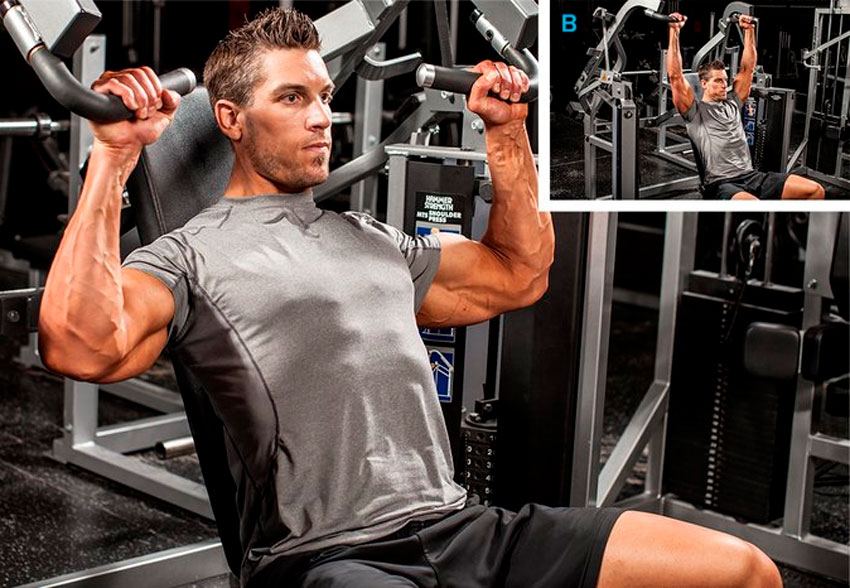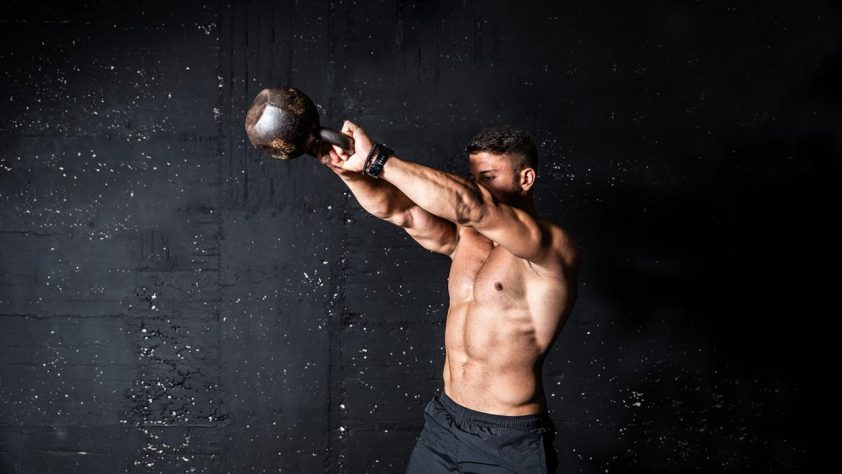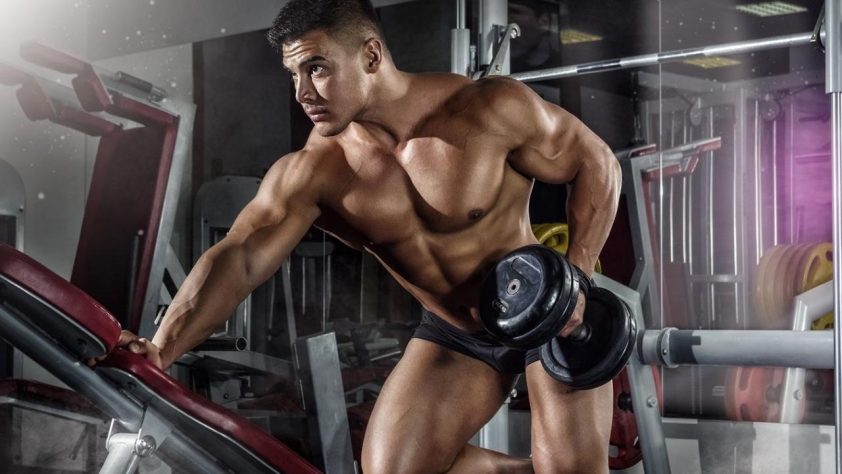Powerful deltas cannot be developed without heavy presses. But the shoulder joint is quite vulnerable, and if you constantly press the bar with more weight, you can get injured. Pressing in simulators helps to compensate for some of the load, soften it and make the training more variable. It is also easy to do drop sets and supersets with them, as you can quickly change the weight. In modern gyms, there are lever and block machines for the shoulder press.
The benefits and disadvantages of exercise

Deltas are difficult muscles to pump. Although they work in most pressing movements, not all athletes manage to develop them. The reason is injuries that arise from working with heavy weights. In this regard, training in simulators is much safer than working with free weights. The spine is supported by the back of the simulator, the arms work in one trajectory.
Pros of the bench press in the simulator:
- you can quickly change weight, make a drop set or a set with a minimum amount of rest;
- you do not need to look for dumbbells of the desired weight around the hall, and waste time;
- the back is supported and protected from injuries that plague athletes in the military press;
- in a hummer, you can do one-handed presses, in most block presses, direct and reverse presses;
- the design of the simulator excludes stretching of muscles and ligaments due to inertia force. Even if the athlete abruptly lets go of the weight for some reason, he is not injured, the safety stops extinguish inertia.
The disadvantages of this exercise are few. People who are very small or tall can face problems due to anthropometry. For a person of ordinary parameters, most “hummers” or block machines are convenient, the adjustments allow you to train in a comfortable mode.
What muscles work
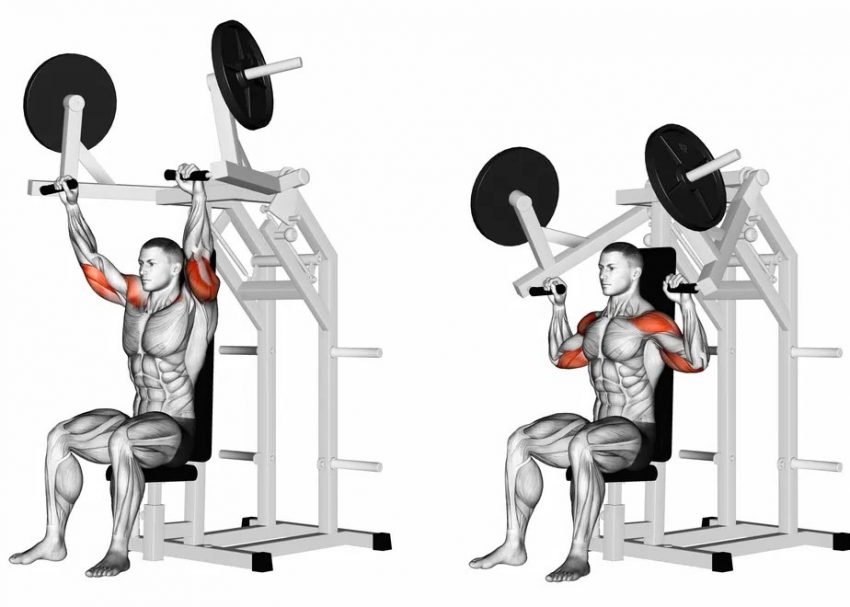
The main muscles are the middle and front deltas. The posterior delta stabilizes the shoulder along with the rhomboid and trapezius muscles, and the abs act as a “body support” in static position. The leg muscles are partly turned on if the athlete pushes his legs into the floor on high weights in order to shake the weight effectively. The movement also involves the work of the triceps shoulder muscle, as in other pressing exercises.
Technique for performing a press in a hummer on the shoulders
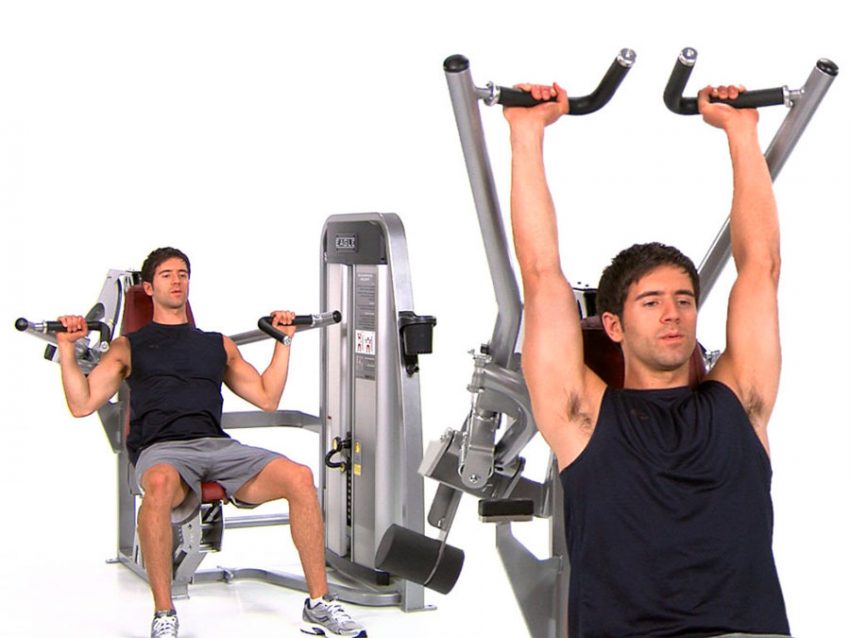
- the simulator needs to be adjusted to suit your height. We sit down, the hips should be parallel to the floor, the back should be pressed against the back, and the handles should be just above the shoulder joints so that the grip is comfortable. If the simulator allows you to slightly tilt the backrest, this should be done so that the support is comfortable;
- having adjusted the machine, you need to return to the starting position. We sit up straight, we draw in our stomach, we draw air into the chest, and we press our back against the back of the simulator;
- it is important that at the start the shoulders are not brought to the ears, and the shoulder blades are brought together and lowered to the pelvis;
- on exhalation, extension is performed in the shoulder and elbow joints, press up;
- on inhalation, the handle is lowered to its original position, the chest is lowered;
- throughout the approach, push the chest up, tighten the stomach.
Variation of the press with one hand
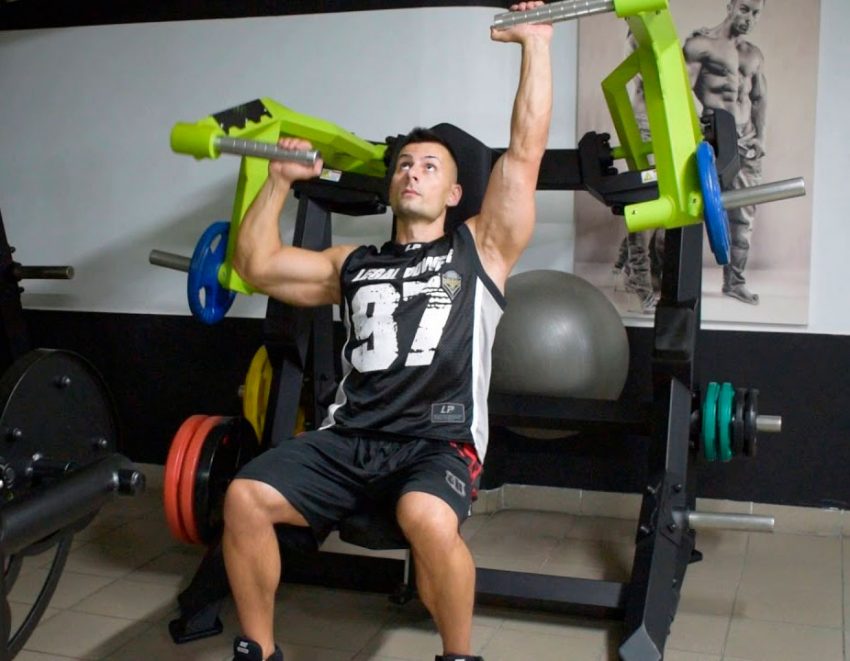
Most athletes are a little asymmetrical, but in bodybuilding they strive for perfect forms. The one-arm seated press is a way to correct slight asymmetries. To complete it, you will need a hummer, a special simulator of a lever structure, and not a simulator in which both handles are fixed. The press is performed either in the set alternately, that is, first the right hand presses, then the left, or first all the approaches with the right, then with the left. The second option is considered more preferable if the athlete has significant asymmetry, and he cannot balance his strength indicators.

